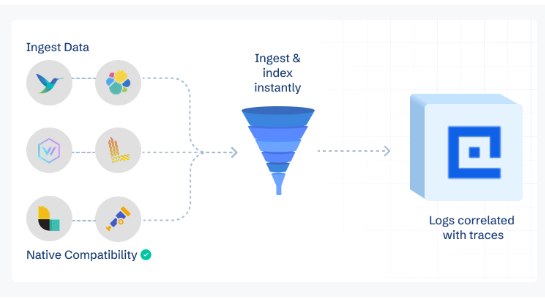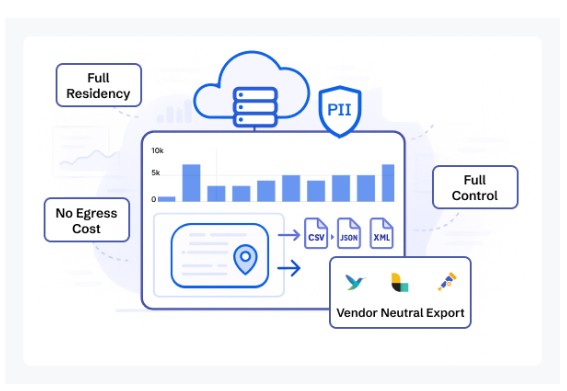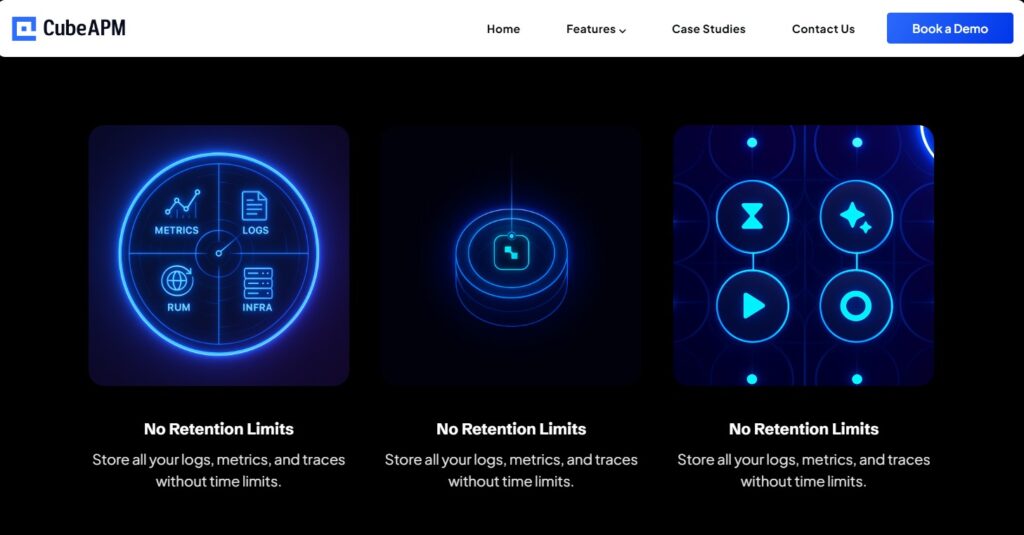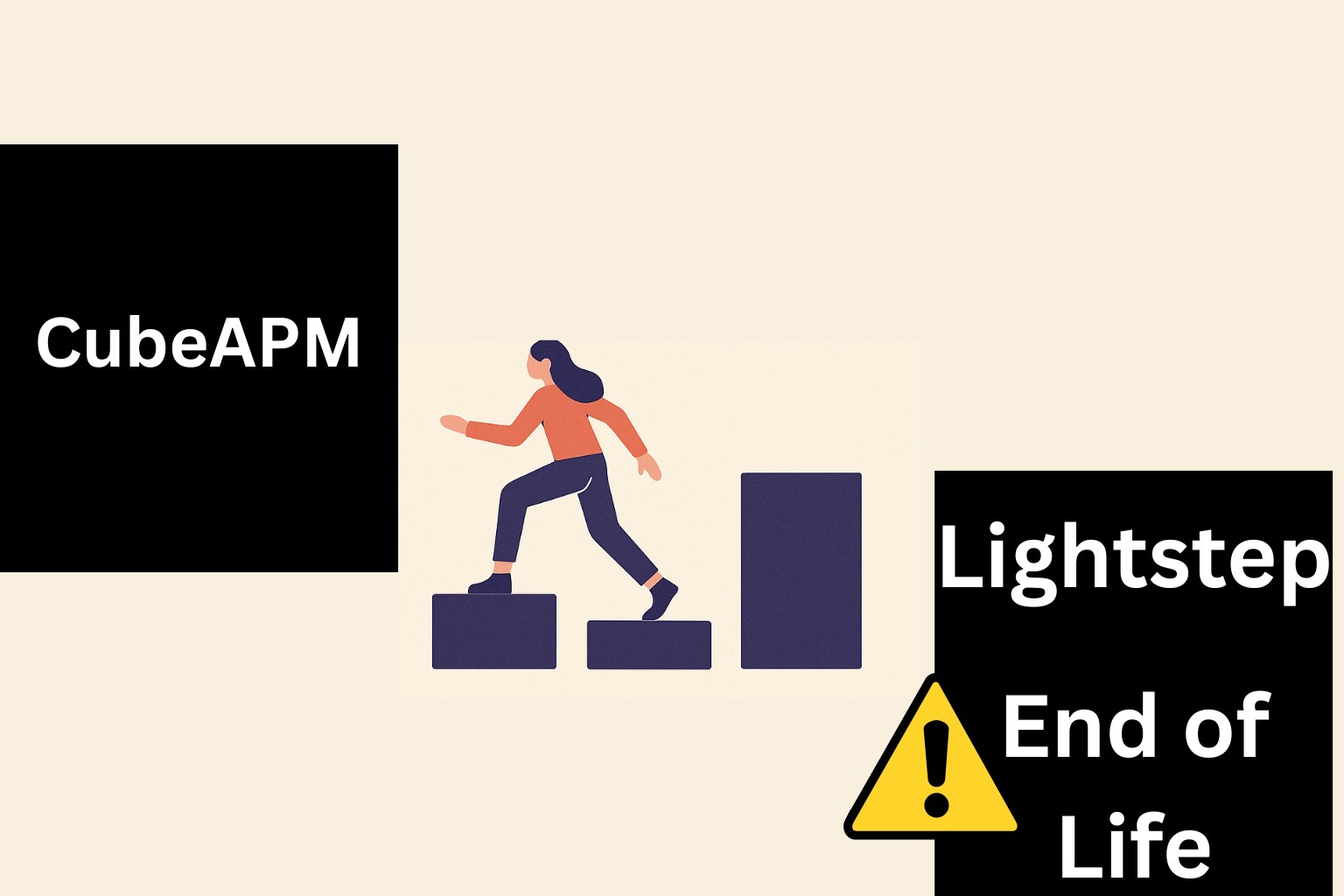ServiceNow has confirmed what many in the DevOps community feared: Lightstep end of life (EOL). The product will stop receiving updates, patches, and official support by March 1, 2026, or the subscription end date (whichever comes later). For teams that have relied on Lightstep to trace distributed systems or troubleshoot production outages, the countdown clock has started.
For teams looking ahead, CubeAPM stands out as one of the best Lightstep alternatives. It’s an OpenTelemetry-native platform that integrates seamlessly with existing Lightstep collectors, so migrations are completed within an hour. CubeAPM offers the full observability stack with on-prem control, predictable pricing, unlimited log retention and is cost-affordable at scale with flat pricing of $0.15/data ingestion.
Table of Contents
ToggleWhat Lightstep Was Known for?
When Lightstep first entered the observability market, it quickly stood out as a modern alternative for engineering teams grappling with microservices complexity. Its clean design, strong focus on distributed tracing, and early commitment to OpenTelemetry (OTEL) made it an attractive choice.
Workflows were API-driven, data pipelines were easier to follow, and for many teams it felt like a forward-thinking solution compared to older, bulkier platforms. In 2021, ServiceNow acquired Lightstep to strengthen its observability portfolio and expand its reach.
Why Lightstep Users Must Act Now
With Lightstep heading into its end of life, the risks of staying on the platform begin to multiply. From unpatched vulnerabilities to rising compliance pressure, every month of delay makes migration more urgent.
No More Patches = Growing Attack Surface
When a product reaches the end of life, the steady stream of security patches stops. From that point on, vulnerabilities discovered in the future remain exposed. Research shows that around 5% of data breaches are tied to unpatched software, often because organizations relied on outdated or unsupported tools.
For Lightstep users, this means every newly discovered flaw could linger indefinitely, increasing the risk of breaches, ransomware incidents, and recovery costs that far outweigh the effort of migrating early.
Unsupported Tools Break Audit Readiness
Modern regulations such as SOC2, HIPAA, and GDPR don’t just expect organizations to track their environments; they require those monitoring systems to be actively maintained. Once Lightstep is officially unsupported, it no longer meets that bar. Nearly 47% of organizations admit to failing formal audits multiple times over a three-year period, often due to gaps in maintenance or outdated software controls.
For industries where compliance is non-negotiable, continuing with an EOL tool risks failed audits, financial penalties, and restrictions on handling sensitive data.
Agents Break, Integrations Fail, Visibility Declines
Even if Lightstep continues to run after the cutoff, the world around it won’t stop moving. Kubernetes versions advance, cloud APIs evolve, and exporters release new changes. Without updates, unsupported agents and collectors gradually stop working as intended.
When that happens, traces and metrics can disappear from dashboards, and blind spots spread across environments. Latency spikes or error surges may slip by unnoticed until they disrupt users. Over time, observability that once felt reliable becomes patchy and unpredictable.
Downtime Is More Costly Than Ever
The financial damage from downtime is no longer measured in inconvenience; it’s measured in millions. Even conservative benchmarks like Gartner’s figure of $5,600 per minute, over $300,000 per hour, underscore the severity.
Unsupported observability slows incident detection and stretches resolution times, making every outage more expensive and more damaging to customer trust.
The Cost of Waiting
Lightstep’s official shutdown is not a distant event; it’s a defined date (March 1, 2026) that is approaching quickly. The longer teams wait to act, the harder it becomes to move cleanly. Migration under the pressure of a broken integration or active incident usually leads to rushed changes, mistakes, or even data loss.
Taking a proactive approach provides the space to plan and validate, ensuring a smoother transition. Moving early avoids the chaos of last-minute changes and reduces both cost and risk.
The Way Forward After Lightstep: Why Teams Choose CubeAPM
With Lightstep heading toward its sunset, teams are already weighing their next move. The most common alternatives that come up in discussions are Datadog, New Relic, Dynatrace, and Better Stack. They’re established in the observability space with broader feature sets than Lightstep offers. On paper, they look like safe landing zones. But when organizations evaluate these, some serious problems tend to emerge:
The Challenges With Other Lightstep Alternatives
- Expensive pricing models: At larger scales, costs rise quickly. Teams ingesting 10+ TB of data or managing large host fleets often see invoices in the $4,000–$10,000+ per month range, with additional charges tied to user licenses, hosts, or feature add-ons.
- Limited flexibility on data ownership and compliance: Most vendors store data in their own cloud, creating GDPR, HIPAA, and localization hurdles for regulated industries. Retention policies are fixed, making it difficult to adapt to specific compliance requirements.
- Vendor lock-in and complex contracts: Multi-year deals, proprietary agents, and opaque licensing structures can make it hard to scale flexibly or switch providers later, locking teams into ecosystems that don’t adapt easily.
These issues can make migration feel like trading one set of limitations for another. That’s why more teams are looking for a solution, such as CubeAPM, designed to avoid these pitfalls.
The Best Lightstep Alternative: CubeAPM
Let’s talk about the reasons that make CubeAPM the best alternative to Lightstep:
OpenTelemetry-Native Migration in Hours
CubeAPM is built to work with the pipelines Lightstep users already run. Because it is fully OpenTelemetry-native, existing collectors can be redirected to CubeAPM with minimal changes. This eliminates the need for a costly “rip-and-replace” process. Migrations that would normally take months can be completed in a matter of hours — often under a single business day — without sacrificing coverage or risking blind spots during the transition.
Full-Stack Observability Beyond Tracing
Where Lightstep specializes in tracing, CubeAPM broadens the scope to provide complete observability in one platform. It includes APM, distributed tracing, log monitoring, infrastructure and database visibility, synthetic monitoring, real user monitoring (RUM), and error tracking. This holistic approach allows teams to diagnose issues faster by correlating logs, metrics, and traces side by side, instead of stitching together multiple tools. The result is a shorter path from detection to root cause.
Unlimited Log Ingestion Without Penalties

Logs are often the most expensive part of observability under traditional vendors, with teams forced to sample aggressively or archive data early to control costs. CubeAPM takes a different approach: all logs can be ingested without hidden caps or surprise fees.
By charging a flat rate per GB, CubeAPM ensures that developers never have to decide between retaining valuable logs and protecting their budget. This unlimited ingestion model enables deeper investigations, longer retention windows, and complete historical context — all without the “log tax” that drives many teams away from incumbents.
Transparent Pricing and Predictable Savings
Unlike incumbents that bill by host, user license, or feature tiers, CubeAPM’s pricing is straightforward: $0.15/GB of data ingested. There are no hidden add-ons, and customers aren’t penalized for adding more engineers to the system. At scale, organizations typically save 60–70% compared to Datadog or New Relic. This transparency allows finance teams to forecast spend accurately and reduces the shock of unexpected invoices.
Compliance and Deployment Flexibility

For organizations in finance, healthcare, or government, compliance and data control are non-negotiable. CubeAPM addresses this by offering self-hosting and on-prem deployments. This flexibility ensures observability data stays within required jurisdictions, easing GDPR and HIPAA compliance, while also cutting latency and egress costs by keeping data closer to production environments.
Responsive, Engineer-Centric Support
Observability matters most when things go wrong. Traditional vendors often rely on ticket queues with response times measured in days. CubeAPM takes a different approach: customers get direct access to engineers via Slack or WhatsApp with response times in minutes. This faster turnaround reduces mean time to resolution (MTTR) and gives teams the confidence that their migration and ongoing operations will be fully supported.
Smart Sampling for Better Efficiency

CubeAPM introduces smart sampling, which goes beyond probabilistic methods by retaining traces based on context — such as latency or error conditions. This ensures that the most valuable data is preserved while keeping ingestion costs under control. For teams moving away from Lightstep, this balance means they can scale observability without scaling costs.
Proven Savings at Scale
The cost differences aren’t theoretical. In side-by-side comparisons at 10TB of monthly data ingestion, CubeAPM comes in at roughly $1,480/month, while Datadog and New Relic exceed $4,500/month.
That represents more than 65% in direct savings, even before factoring in indirect benefits like reduced egress fees, fewer support overheads, and no per-user licensing costs. For organizations that need to grow observability coverage while keeping budgets flat, these savings can be the difference between cutting visibility and expanding it.
Step-by-Step Migration Plan: Lightstep to CubeAPM
Migrating from Lightstep to CubeAPM doesn’t require a rip-and-replace project. Because CubeAPM is fully OpenTelemetry-native and supports the same collector model, you can transition in under an hour if you follow a structured plan.
Step 1: Inventory Current Lightstep Integrations
Start by mapping the workloads currently sending data into Lightstep:
- APM/Traces: Identify OpenTelemetry SDKs or auto-instrumentation libraries in use.
- Infrastructure Metrics: List host- or cluster-level exporters (Prometheus, cAdvisor, Node Exporter).
- Logs: Note if OTEL logging exporters or direct API pushes are configured.
- Dashboards/RUM: Capture what’s being visualized in Lightstep so you can recreate those views in CubeAPM.
This inventory will guide what needs to be redirected.
Step 2: Deploy CubeAPM (On-Prem/Self-Host)
Choose your deployment model:
- SaaS: Quickest option; no infra overhead.
- On-Prem: Use Helm to deploy CubeAPM into your Kubernetes cluster. Installation involves creating a namespace, adding the CubeAPM Helm repo, and running
helm install cubeapm …with your values file.
The install docs provide exact manifests for Kubernetes or VM-based environments.
Step 3: Redirect OpenTelemetry Collectors
Lightstep users already rely on OTEL collectors. Swap the endpoint in your collector config:
- Replace the Lightstep exporter with the CubeAPM OTLP endpoint (
<your-cubeapm-endpoint>:4317for gRPC or4318for HTTP). - If you’re using Kubernetes, update the DaemonSet or Deployment manifests so all node agents point to CubeAPM.
Because CubeAPM natively supports OTLP, no code changes are required, just a config swap.
Step 4: Validate Metrics, Logs, and Traces

Once the pipeline is live, confirm that all signals are flowing:
- Metrics: System, container, and application metrics should appear in CubeAPM’s Infra Monitoring view.
- Logs: Stream logs into CubeAPM via OTEL log exporters or Fluent Bit integration.
- Traces: Distributed traces should start populating APM dashboards.
- RUM/Synthetics: Validate front-end metrics and synthetic tests if enabled.
CubeAPM dashboards will pre-populate for many integrations, but you can also build custom ones from the Configure UI.
Step 5: Rebuild Alerts and Workflows
Recreate Lightstep alerts in CubeAPM’s alerting engine:
- Alerts can be routed via email, Slack, PagerDuty, or custom webhooks.
- Define conditions for latency, error rates, saturation, and business KPIs.
- Connect to incident management workflows so the on-call team continues to get timely notifications.
Step 6: Decommission Lightstep Safely
Once validation is complete and alerts are tested, gradually turn off Lightstep exporters. Keep both systems running in parallel for a short overlap period to confirm parity. After that, Lightstep can be safely decommissioned.
CubeAPM vs LightStep
Choosing a Lightstep replacement isn’t just about cost — it’s about features, coverage, and long-term flexibility. Here’s how CubeAPM compares to Lightstep, Datadog, and New Relic across the dimensions that matter most.
| Tool | CubeAPM | Lightstep |
| OpenTelemetry Support | Yes | Yes |
| Pricing | $0.15/GB data ingestion | Custom |
| Self Hosted + Managed APM | Yes | N0 |
| Smart Sampling strategy | Yes | N0 |
What a Lightstep to CubeAPM Migration Looks Like in Practice
When a monitoring platform goes end-of-life, teams are often left wondering what the migration path actually looks like. The good news: CubeAPM is built for rapid, low-risk transitions, and its OpenTelemetry-native design makes migrating from Lightstep straightforward.
Challenge
With Lightstep shutting down, teams face several risks:
- Traces and metrics no longer ingested or retained.
- Broken integrations as Lightstep agents lose compatibility.
- Compliance issues with unsupported infrastructure.
- Pressure to re-architect dashboards, alerts, and pipelines quickly.
Solution
CubeAPM minimizes migration friction by offering direct OpenTelemetry compatibility and flexible ingestion endpoints. A typical migration involves:
1. Inventory current Lightstep OTEL Collectors: Identify exporters, processors, and receivers already running.
2. Reconfigure exporters: Instead of sending data to api.lightstep.com, update the endpoint to CubeAPM’s OTEL-compatible ingestion endpoint. For example:
exporters:
otlp:
endpoint: cubeapm-ingest.yourdomain.com:4317
headers:
"x-api-key": "<your-cubeapm-token>"
3. Validate pipeline mappings:
- Traces → CubeAPM APM dashboards.
- Logs → Centralized log monitoring.
- Metrics → Infra + service-level dashboards.
- RUM + Synthetic tests → Enable via CubeAPM web instrumentation libraries.
4. Migrate alerting rules: Replicate Lightstep conditions (e.g., latency, error rates) into CubeAPM’s alerting system. CubeAPM supports PromQL-style rules for seamless continuity.
5. Test and cutover: Run both Lightstep and CubeAPM collectors in parallel for validation, then decommission Lightstep agents once CubeAPM pipelines are verified.
Results
- Migration in <1 hour: Existing OTEL collectors can be pointed to CubeAPM with minimal config changes.
- Full observability coverage: Beyond traces, teams gain logs, infrastructure metrics, RUM, and synthetic monitoring in a single platform.
- Cost optimization: Transparent $0.15/GB ingestion, delivering 60–70% savings compared to incumbents.
- Compliance assurance: With self-hosting or on-prem deployment options, teams stay compliant with HIPAA/GDPR and data localization laws.
- Developer-friendly adoption: Smart sampling reduces noise while retaining high-value signals.
Conclusion
Lightstep’s end of life means the end of safe, supported observability for the teams that still rely on it. Staying on an unsupported platform creates unnecessary risks, such as unpatched vulnerabilities, broken integrations, failed compliance audits, and costly outages.
The good news is there’s a better way forward. CubeAPM is the most compatible, cost-effective, and future-proof alternative to Lightstep. With native OpenTelemetry support, full-stack MELT coverage, smart sampling, and transparent pricing, CubeAPM combines everything modern engineering teams need to stay ahead of incidents, without the complexity or hidden costs.
You can even deploy CubeAPM in under an hour, which makes the migration from Lightstep quick while reducing costs. Migrate to CubeAPM now.

